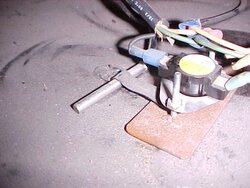The intent of a return temperature protection "devise" is to assure the return water temperature to the boiler stays hot enough to prevent condensation. Typically 140 F return temperature will assure this.
Ideally you want a device with "intelligence" One that can monitor and respond to temperature. Many methods are out there. Simple bypass piping, or a bypass circ can be used, but again it is best to have some brains.
3 way thermostatic valves are a common, simple way. They use a wax cartridge to respond to temperature and open and close the ports. They are a fairly high pressure drop "parasitic" device as there is a lot going on inside that brass body.
Another common and very simple way is to use a temperature sensitive control like a strap on aquastat, snap switch, setpoint control, etc. The sensor monitors the temperature at the return piping, or sometimes in a well in the boiler, or even strapped to the boiler itself. It merely drops power to the circ until the boiler temperature is sufficient.
Viessmann and many other boilers, gas fired, use this simple method.
My EKO came equipped with a simple snap style mounted along side the temperature control probe. It does cycle a few times until the boiler gets up to speed but works very well.
It also drops out the circ when the fire dies so as to not circulate any heat back out of my buffer tank.
Just another option to consider if you would rather not purchase, install and deal with 3 way thermostatic valves.
hr
Ideally you want a device with "intelligence" One that can monitor and respond to temperature. Many methods are out there. Simple bypass piping, or a bypass circ can be used, but again it is best to have some brains.
3 way thermostatic valves are a common, simple way. They use a wax cartridge to respond to temperature and open and close the ports. They are a fairly high pressure drop "parasitic" device as there is a lot going on inside that brass body.
Another common and very simple way is to use a temperature sensitive control like a strap on aquastat, snap switch, setpoint control, etc. The sensor monitors the temperature at the return piping, or sometimes in a well in the boiler, or even strapped to the boiler itself. It merely drops power to the circ until the boiler temperature is sufficient.
Viessmann and many other boilers, gas fired, use this simple method.
My EKO came equipped with a simple snap style mounted along side the temperature control probe. It does cycle a few times until the boiler gets up to speed but works very well.
It also drops out the circ when the fire dies so as to not circulate any heat back out of my buffer tank.
Just another option to consider if you would rather not purchase, install and deal with 3 way thermostatic valves.
hr



